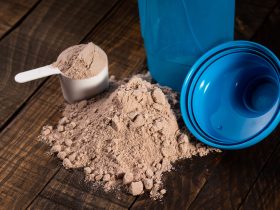
Whether one is starting to lose weight or simply trying to add a few pounds of muscle it is critical to determine which information will be beneficial to their success and which is simply just white noise. Fitness must be finely tuned uniquely to each individual based on their own needs and physiological structure. It’s equally simple and easy as perceived by one based on their preference.
Prepare
Whether it is chest day, back day, or leg day, the workout should always start with a warm-up. Static stretches alone won’t help reduce your risk of injury. Start with 5 to 10 minutes of light cardio: a brisk walk, sometimes on the elliptical, or a short stint on the treadmill.
Next, target the specific muscles intended to be worked on that day. Dynamic warm-ups like mountain climbers, bodyweight squats, and walking lunges help increase blood flow and heart rate while warming up muscles. Save stretching for a post-exercise release.
Another pre-workout must be making sure to be properly fueled going into the session. 60 minutes of exercise can cause to loss of more than a quarter of water. Drink the recommended two 8-ounce bottles of water a few hours before exercising, another glass half an hour before exercise, and 7-10 ounces every 20 minutes while working out.
Ingest a combination of carbs and fast-absorbing protein before a workout to maximize results. Carbs are the body’s preferred fuel source, and research has shown that taking whey protein prior to training will yield better results and increase resting energy expenditure by an average of 6-6.5 percent for up to 48 hours.
Stay Focused
Upon entering the gym, focus on getting in the “zone.” It’s extremely important that enables one to tune out all other distractions and focus on what needs to be done. For many people, this means listening to their favorite music, which helps them stay focused and motivated to work their hardest.
Be Patient
Don’t attempt to squeeze in a full workout session in half the time. Crammed workouts increase chances of injury, and stop lifting as heavy as per one’s goals (the shortened rest periods hinder full recovery). If one’s short of 45 minutes to be devoted to legs, cut back on isolation exercises and the total number of sets and reps performed. Make sure to give a scaled-back workout with 100 percent effort. Get in an effective, time-pressed workout.
Fix Your Technique
It’s imperative that good form is sustained to ensure that correct muscles are targeted and decrease the amount of unnecessary stress placed on muscles and joints. Proper form dramatically decreases any chance of injury. As weights increase, one must ensure the increase never comes at the expense of good form. Maintain steady, consistent breathing throughout the exercise—inhale on the eccentric portion (where force isn’t produced); exhale on the concentric portion (where force is produced; the hard part).
Seek Out Help
Consider having a workout partner spotting on the heavier lifts, such as bench press, shoulder press, and squats, knowing that a person is there to help assist with the weight. As one gets stronger and aims to push the barriers to success, this becomes increasingly important. Having a spotter can also let one go to complete failure with their lifts. While one shouldn’t do this every session—it can easily lead to overtraining—doing it on occasion can evoke greater training gains.
Keep It Mixed-Up
One of the biggest results-killing mistakes many people make is doing the same workout over and over again without any change whatsoever. You must change your workout every so often. Not only will it prevent boredom, but variety will also prevent you from reaching a plateau. Remember, if nothing changes once your body adapts to a workout, you won’t change either. Don’t fret: this doesn’t mean you have to completely scrap your current program. Change can come in many forms—more weight lifted, more sets completed, a different exercise selection or even a different grip can work to change your routine.
Raise The Bar
Adding more weight to the bar is going to take priority. Make sure to challenge yourself with weight in the first place. Go easy and see slow-producing results, if any at all. Not sure which weight to start with? Choose a weight with which to comfortably perform 12 to 15 reps.
Include Compound Movements
Compound movements, which involve more than one muscle group at a time, give the best results for the time invested. These lifts always lay a good form of foundation. Most compound movements work on lower and upper body simultaneously. Instead of just targeting the triceps with kickbacks, get shoulders involved with an overhead press. Instead of training quads with the leg press machine, squat to work quads, hamstrings, glutes, and lower back. When getting to more advanced levels and much more intricate training routines, isolation exercises take a greater focus in a program plan set-up.
Plan for Rest
Don’t underestimate the importance of rest days—they’re necessary for the body to recuperate. People who don’t rest sufficiently won’t make any progress, and may even find themselves growing weaker. For optimal results, aim for 60-90 seconds of rest between sets. That’s enough to recover about 90% of the muscle’s capacity to do work.
